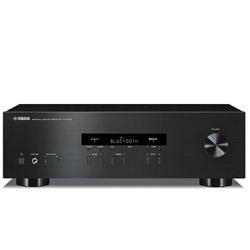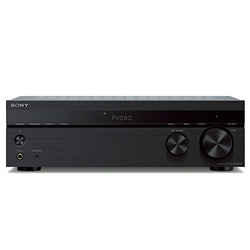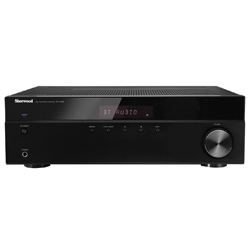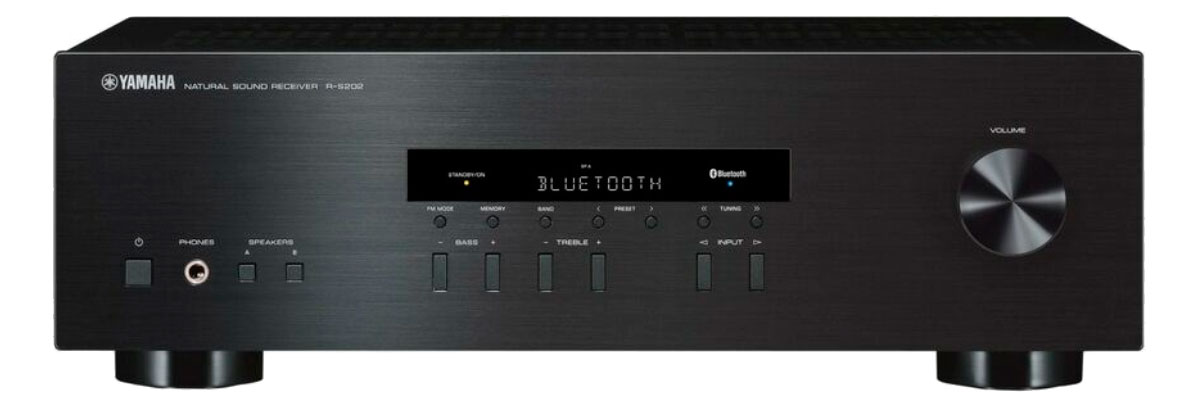 From Yamaha R-S202 specs a distinctive “new” feature of this stereo receiver is Bluetooth technology. Using Bluetooth, you can stream (transfer) music or other audio content. The combination of signature sound and attractive prices make it a bargain for beginner audiophiles. See more thoughts in this Yamaha R-S202 review.
From Yamaha R-S202 specs a distinctive “new” feature of this stereo receiver is Bluetooth technology. Using Bluetooth, you can stream (transfer) music or other audio content. The combination of signature sound and attractive prices make it a bargain for beginner audiophiles. See more thoughts in this Yamaha R-S202 review.
Yamaha R-S202BL review
Features
Output power 100 W per channel at a load of 8 ohms. The R-S202 receiver allows you to store in your memory up to 40 FM stations, the Auto Preset function serves for this. The model has several pairs of connectors, which allows you to connect several speakers. A special selector allows you to switch between them.
Design and build
The front panel is simple and concise. Large buttons control the switching of the tone block and inputs. The small buttons switch the channels of the radio stations, tune them, and choose the acoustics that are currently working. The front panel, black, is made of aluminum. On the rear panel there are analog inputs for a CD player and two more pairs of universal ones. There is a set of inputs and outputs, designed, for example, for a cassette recorder, babin tape recorder or other recorder. Two pairs of spring terminals for acoustics allow the receiver to be used together with acoustics in configuration A or B, A B. The remote control is made of plastic. It is quite simple, there are a huge number of small buttons on it, and there is no backlight. The remote can also control Yamaha CD players.
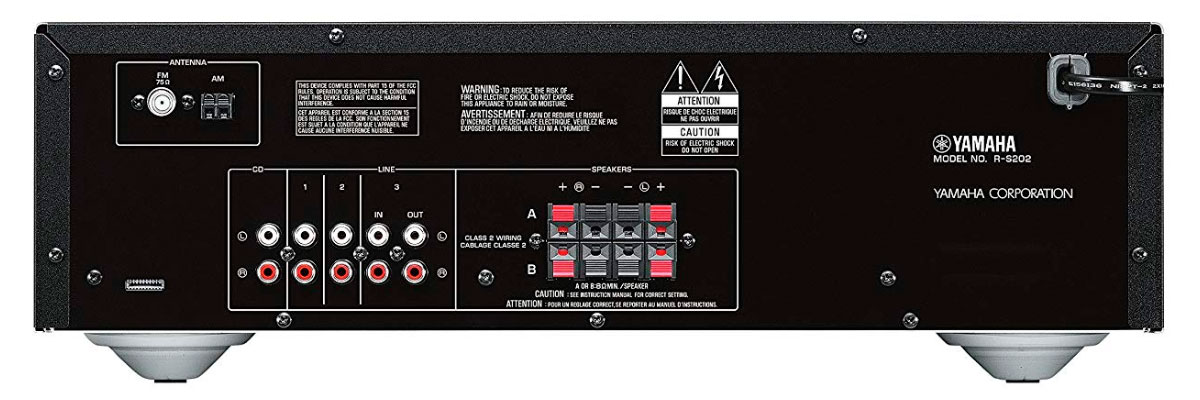
Connectivity
The budget class of the device is given by acoustic terminals - there are four pairs of them for connecting two pairs of speakers, but all of them, unfortunately, are spring-loaded. The device is equipped with four line inputs on the RCA connectors and one output.
Setup
Please note that there is no management application. Therefore, you will have to love this remote control, or look for a universal alternative. Setting up the R-S202 receiver took only a few minutes. It consisted in connecting acoustics. I saved a lot of time, because I did not have to set the distance to each of the acoustics, signal levels for each channel, or start auto-tuning, as it usually happens during the setup of a modern AV receiver.
Pros and Cons
Pros
- The receiver is easy to setup, with great functionality
- At 120 feet away the Bluetooth (streaming Pandora) and remote both work
Cons
- The volume knob had to be turned really far to get a good sound level
Common features
Product
Model
Brand
Reviews
Amplifier
Channels
Stereo power (RMS), W/Ohm
Output impedance, Ohm
Frequency response
THD in stereo, %
Audio features
Digital to analog converter (DAC)
Bi-amping
Pure direct (straight)
Auto speaker calibration
Speaker A/B switching
Other audio features
Connectivity
Wi-Fi
USB
Bluetooth
Ethernet (RJ45)
DLNA
MHL
Streaming services
Apple Music (AirPlay)
Amazon Music
Spotify
Other streaming services
Extensive connection
HDMI input/output
HDMI ARC (Audio Return Channel)
HDMI eARC (Enhanced Audio Return Channel)
HDMI CEC
Digital content protection (HDCP)
Subwoofer output (LFE)
Headphone output
Optical digital input
Coaxial digital input
Composite input
Component input/output
Phono (MM) input
Front panel connectors
Multi channel preamp output
Video features
HDR (High Dynamic Range)
4K signal pass-through
8K signal pass-through
HDMI signal pass-through
3D signal pass-through
HDMI pass-through in standby mode
Video conversion
Analog to HDMI scaling
HDMI to HDMI scaling
Dolby Vision
Other video features
Additional features
Voice control
App control
Display
Tuner
Sleep timer
Auto power off
ECO mode
Graphical user interface (GUI)
Setup assistant
Firmware update
Other additional features
Multi-room
Multi-room zones
Zone audio output
Zone HDMI output
Multi-room control
RS-232
Remote control input/output (IR)
DC trigger output (12V)
Multichannel surround
Dolby Atmos
Dolby TrueHD
Dolby Surround
Dolby (other)
DTS:X
DTS HD Master
DTS Virtual:X
DTS Neural:X
DTS (other)
Auro-3D
IMAX Enhanced
Multichannel stereo
Audio file formats
MP3
WMA
AAC
WAV
FLAC
ALAC
Other audio file formats
Power
Operational power consumption, W
Standby consumption, W
Removable power cord
User manual
Manual
Dimensions
Size W x H x D, cm/inches
Weight, kg/lbs
Other
Release year


